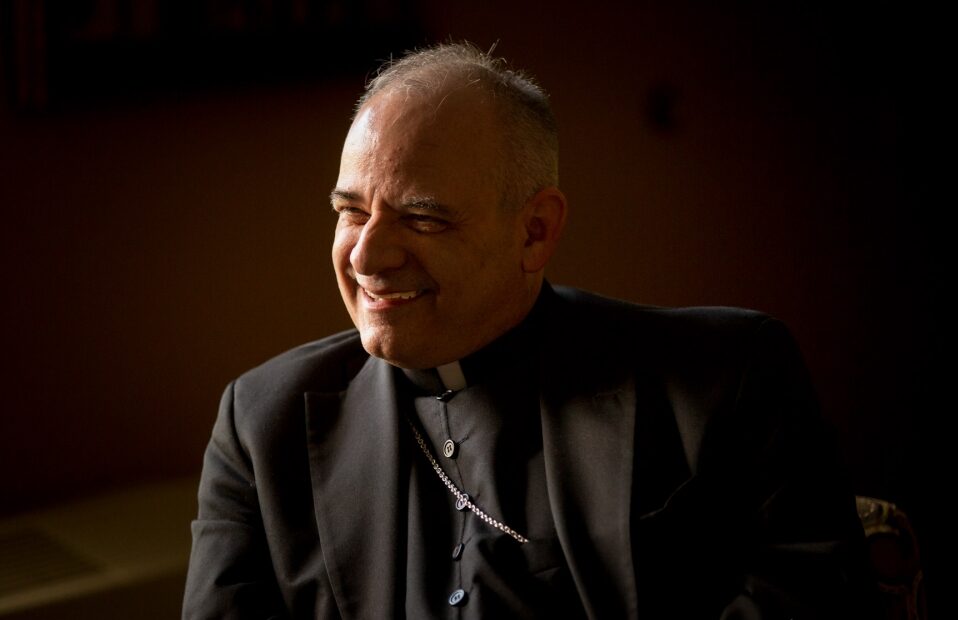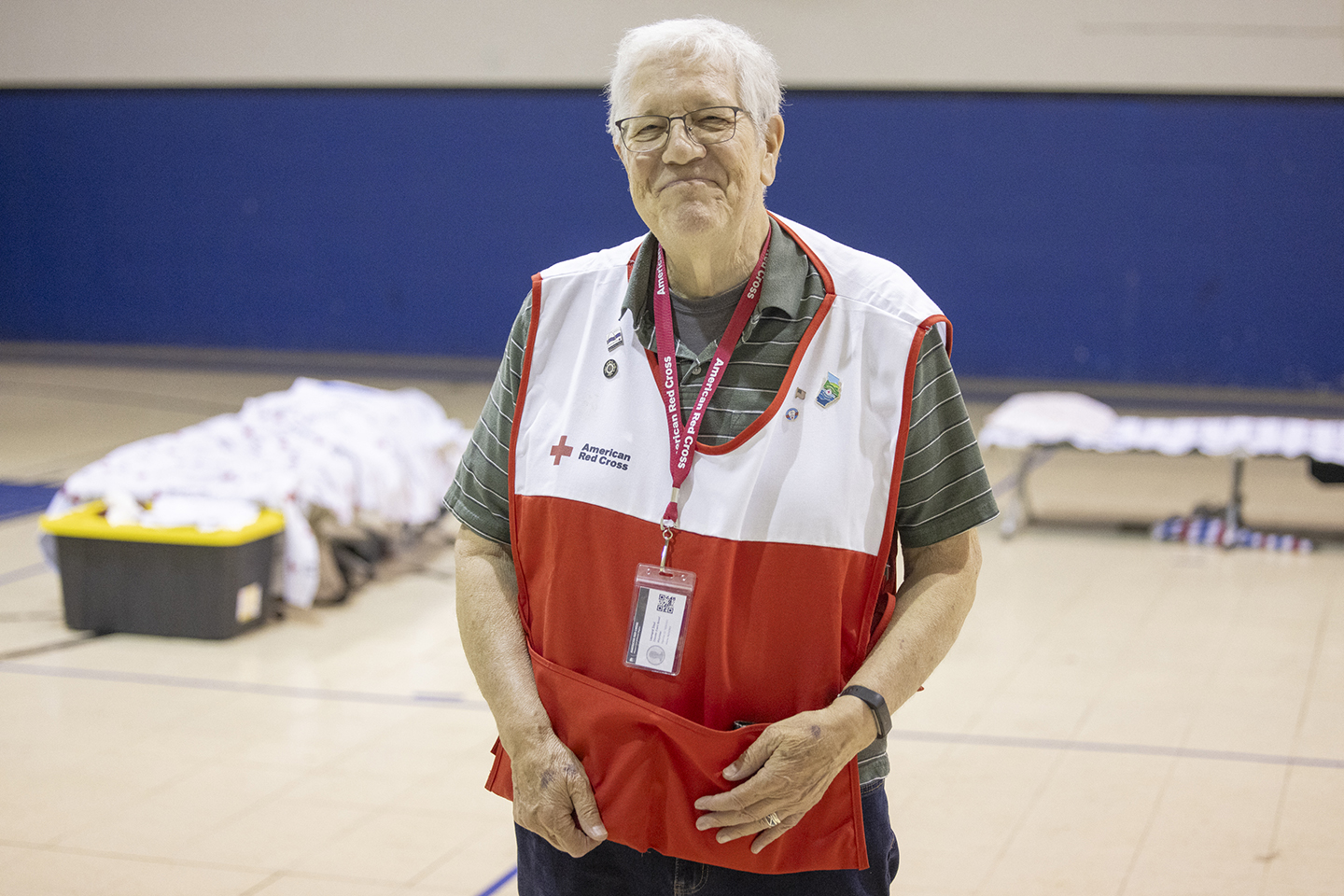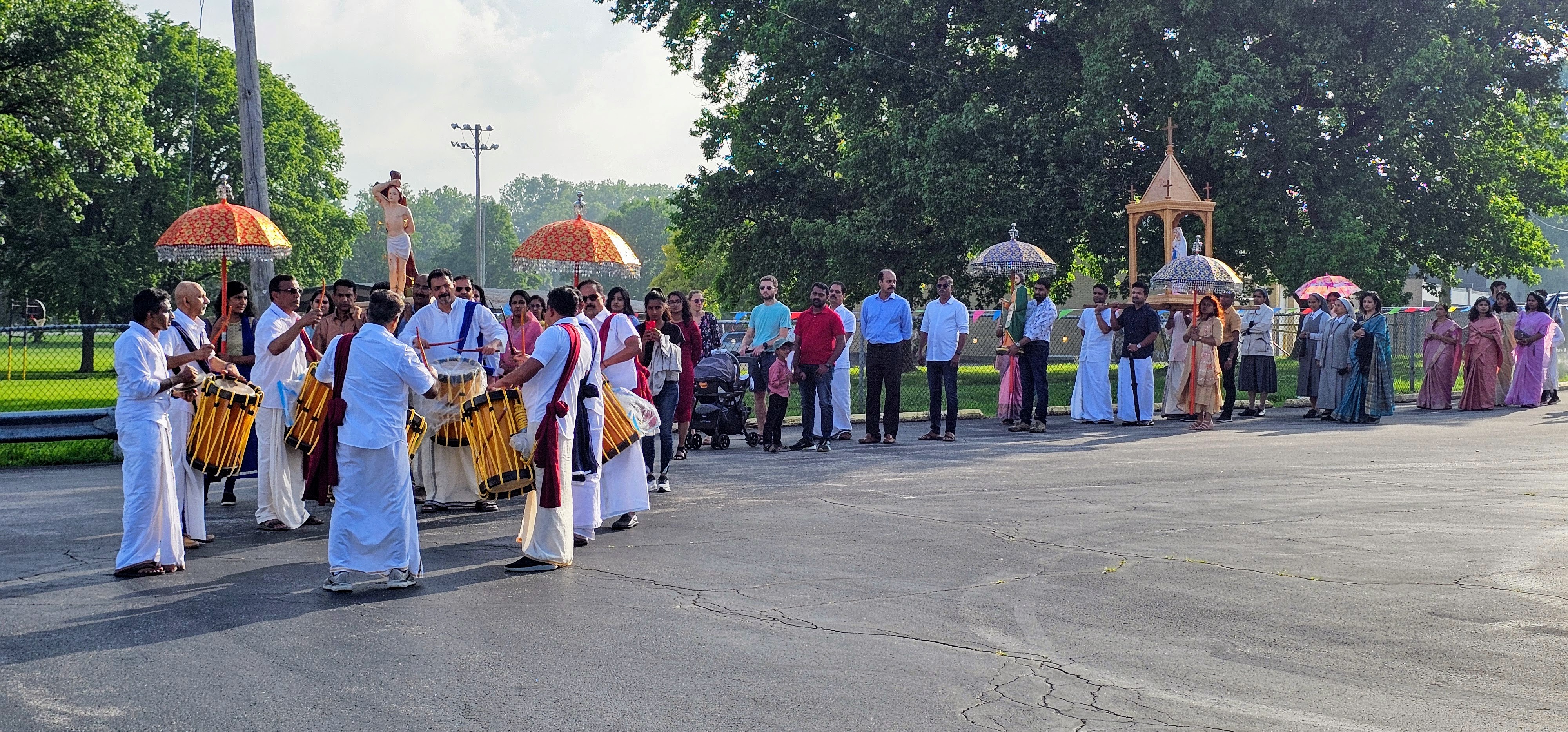‘King’ of the butterflies

Kindergartners at St. Margaret Mary Alacoque raise Monarch butterflies, care for ‘Kinder Garden’
As the kindergartners exited St. Margaret Mary Alacoque School en route to their garden by the playground, the beauty of God’s creation — in this case, a Monarch butterfly — flew just overhead, from the front to the back of the orderly line.
“It’s a butterfly!” a student said, excitedly.
“I think that was one we let go, don’t you think?” teacher Kathy Gallagher asked with a smile.
Gallagher’s students have raised two Monarchs in the first weeks of the school year, learning about the butterfly’s stages of life as well as its needs while maturing and evolving.
They hoped to see Monarch butterflies in action on this excursion outside, as they had experienced the previous day when they saw five at recess on the garden’s milkweed plant. But, alas, other than the serendipitous flyby, the Monarchs made themselves scarce on this visit to the garden.
Not that it mattered, though; the students’ enthusiasm wasn’t dampened at all. They had plenty to keep them occupied — several smaller butterflies and a few moths flitting about, the pleasant smells of the garden’s flowers and the thrill of watering the plants.
Looking every bit like a junior fire brigade, about 10 students carried a hose in a line across the parking lot as Gallagher supervised while unlocking the faucet. Then, they took turns watering the plants, keeping the hose and water in the raised planter boxes and, most importantly, not on each other.
The parish Girl Scout troop built the raised beds, which the kindergarten class took over two years ago. With the volunteer help of “Grandma Mary” — better known as Mary Talleur, whose grandson, Joshua, was in that class — the students filled the bed with plants and flowers, including native plants.
“Ms. Gallagher wanted to start a ‘Kinder Garden,’” said Talleur, who happens to be a professional gardener and had plants to share from her garden. “That was the start.”
Despite having no connection to the kindergarten class last year, Talleur voluntarily stayed on and helped maintain the fledgling garden, then took it up a notch for this school year with her granddaughter, Juliana, starting kindergarten. A fortuitous trip to a friend’s garden right before the start of classes started the Monarch project.
“I was babysitting and took the kids … there were so many caterpillars,” said Talleur, who ended up with a couple and sent them to school with Juliana on the first day. The caterpillars were in a jar with a milkweed plant, which is colloquially known as “a Monarch smorgasbord,” Taller said. “The caterpillars feed on it.”
Although one of those caterpillars didn’t make it, another caterpillar soon replaced it; it was discovered in the jar — Talleur surmises that a Monarch had laid an egg on the milkweed stalk before it went into the jar — so the class still had two caterpillars to watch grow and evolve. Gallagher had a book about Monarchs from the Missouri Prairie Foundation, thanks to Talleur buying it from a neighbor and giving it to the class.
“This has really taken off; Ms. Gallagher says, ‘Look what you started,’” Talleur said, laughing, then deflecting the credit back to Gallagher. “She has been so awesome with explaining it all to the kids. They go to the garden and see what’s blooming and try to identify the plants.”
The kindergartners know their stuff, especially about Monarch butterflies as they demonstrated before heading to the garden on this day. With Gallagher quizzing them, they correctly detailed the four stages of a Monarch’s life; how it starts as an egg, hatches as a caterpillar, evolves into a chrysalis and finally transforms into an adult Monarch butterfly — the so-called king of the butterflies; hence, the name, “Monarch.”
They also detailed how Monarch butterflies are attracted to milkweed and lay eggs on it. The caterpillar hatches and feeds on milkweed, then attaches to a branch and turns into a green, translucent chrysalis before taking wing.
“And what happens when it comes out?” Gallagher asked the class.
“The wings are wet,” Joseph Schoeck said, then demonstrating how the butterfly flaps its wings “super fast” to dry before flight.
Once a Monarch is free to fly, “you take it outside and put it in our garden,” Grace Driskill said.
After being released, the kindergartner’s Monarch went straight to the milkweed plant, which the kindergartners had given life and in turn had given the butterfly life.
“Very cool,” Gallagher said.
As the kindergartners exited St. Margaret Mary Alacoque School en route to their garden by the playground, the beauty of God’s creation — in this case, a Monarch butterfly — … ‘King’ of the butterflies
Subscribe to Read All St. Louis Review Stories
All readers receive 5 stories to read free per month. After that, readers will need to be logged in.
If you are currently receive the St. Louis Review at your home or office, please send your name and address (and subscriber id if you know it) to subscriptions@stlouisreview.com to get your login information.
If you are not currently a subscriber to the St. Louis Review, please contact subscriptions@stlouisreview.com for information on how to subscribe.







